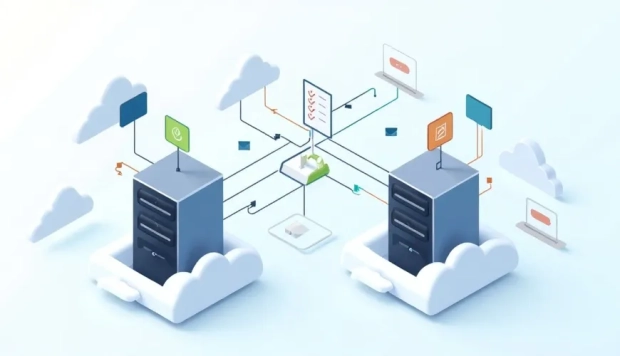Backend as a Service vs Traditional Backend: Which One Should You Choose?

Ask any developer what slows app development the most, and you'll likely hear the same answer - the backend. Setting up servers, configuring databases, securing APIs, and managing scale are still the most time-consuming tasks in software development. In fact, recent industry data shows that backend setup and maintenance consume over half of most teams' total build time.
As products evolve faster and launch cycles shorten, the traditional backend model just doesn't keep pace. That's where Backend as a Service (BaaS) platforms step in - providing ready-to-use backend infrastructure that frees developers from repetitive setup work.
But with so many backend tools emerging, one question keeps coming up: Should you still build a backend manually, or switch to a managed solution?
Let's unpack how traditional backends actually work, why developers are moving away from them, and how platforms like Back4App are transforming backend development in 2026.
What Traditional Backends Are and Why They're Being Replaced by BaaS
A traditional backend is the classic "from-scratch" setup - you create servers, configure a database, manage APIs, and write your own authentication and storage layers. It offers total control, but that control comes at a price: complexity, cost, and time.
For startups and modern teams, this model is becoming less practical. Here's why:
-
Time-heavy setup and maintenance: Configuring servers, load balancers, and databases can take weeks before your first feature ships.
-
Scalability limits: Every growth phase requires more DevOps resources to handle scaling and infrastructure optimization.
-
Higher costs: You pay for servers, monitoring tools, and cloud usage - often before your product even gains traction.
-
Security & compliance overhead: Managing GDPR, SOC 2, or HIPAA compliance manually adds serious complexity.
-
Limited flexibility for AI and real-time apps: Integrating AI agents, analytics, or live features requires multiple third-party tools.
That's why more developers are shifting toward Backend as a Service (BaaS) - a cloud-based alternative that handles these backend chores automatically.
Backend as a Service (BaaS) is a cloud-based solution that provides pre-built backend features-like databases, APIs, authentication, and file storage-so developers can build apps faster without setting up or maintaining servers.
In short:
- No more backend maintenance.
- Faster releases and cleaner workflows.
- Built-in scalability, security, and compliance.
And among all the modern BaaS options, Back4App stands out for blending open-source flexibility with AI-driven automation - helping teams launch faster without giving up control.
Back4App: The Smarter Way to Build Your App's Backend
Back4App delivers one of the most complete open-source Backend as a Service solutions available today. It's built for developers who want to automate backend creation, scale effortlessly, and still maintain full ownership of their data and architecture.
By combining AI automation, open-source transparency, and enterprise-grade reliability, Back4App has become a go-to platform for startups, indie devs, and enterprises looking to simplify backend development.
AI-Powered Backend Creation
Back4App integrates intelligent tools - including its AI Agent and Model Context Protocol (MCP) - that generate entire backends from plain-text descriptions. Developers can type a short prompt such as "User profiles with authentication, chat, and media sharing", and within minutes, Back4App automatically builds the corresponding data models, APIs, and cloud functions.
This automation drastically shortens build time and lets teams focus on features, not infrastructure.
Core Capabilities
- Databases: Scalable, non-relational databases with an intuitive spreadsheet-style interface, automated data modeling, and AI-assisted schema generation for effortless management.
- APIs: Auto-generated REST & GraphQL APIs that stay synchronized with every database change, offering seamless integration and real-time connectivity across multiple platforms.
- Functions: JavaScript-based cloud functions for advanced custom business logic such as payments, notifications, automation triggers, and backend workflows.
- Realtime & Storage: Live queries, instant data synchronization, and CDN-powered file delivery for web and mobile apps, ensuring high performance and reliability at scale.
- Authentication & Messaging: Secure user login, signup, multi-factor authentication, and push notification support to enhance engagement and data privacy.
- Web Deployment: End-to-end full-stack hosting directly from GitHub with integrated monitoring, continuous deployment, and performance analytics.
- Security & Compliance: Certified under SOC 2, ISO 27001, HIPAA, and GDPR - ensuring enterprise-grade data protection, audit readiness, and regulatory compliance.
Developer-Friendly Flexibility
Built on Parse Server and Node.js, Back4App is fully open-source, allowing developers to export or self-host data anytime. It supports multiple SDKs, frameworks, and databases, giving developers the control they need without vendor lock-in.
Transparent Pricing That Fits Every Stage of Growth
One of Back4App's biggest advantages is cost predictability. Unlike traditional infrastructure, where expenses spike as you scale, Back4App follows a transparent, tiered structure with no surprise overages.
Here's how the plans work:
-
Free Plan: Perfect for prototypes and testing. Includes up to 25K requests per month, 1 GB of storage, and community support.
-
Shared Plan (from $25/month): Best for small projects or startups. Offers 1 million requests, 5 GB of storage, daily backups, and email support.
-
Dedicated Plan (from $250/month): Built for scaling teams needing private resources, custom configurations, and real-time monitoring.
-
Enterprise Plan (custom pricing): Ideal for large companies that require SLA guarantees, private cloud hosting, advanced compliance, and 24/7 support.
This structure helps startups test ideas on the Free plan, scale steadily through Shared, and transition seamlessly to Dedicated or Enterprise without rebuilding the backend.
What Developers Say About Back4App
Back4App enjoys a 4.8/5 rating on G2 and 4.9/5 on Product Hunt, reflecting consistent praise for its ease of use and responsive support.
⭐ ⭐ ⭐ ⭐ ⭐ Cyberneid S., Chief Technology Officer:
"Back4App is fantastic. We dropped backend development time significantly. As a startup, using Back4App lets us focus on UI and client-side work while the backend runs smoothly. The free plan helps us launch new apps fast and upgrade only when we scale."
⭐ ⭐ ⭐ ⭐ ⭐ Marek P.
"I love the support from Back4app, which provided fast, helpful guidance and step-by-step directions during the migration of my database, ensuring a smooth transition without interrupting my app's functionality. The Parse integration works seamlessly with my mobile app, avoiding additional costs and complexities. The production-ready Parse Platform integration of Back4app stands out as the best option for my needs."
Developers consistently highlight how Back4App shortens setup time, improves scalability, and simplifies maintenance - all while maintaining open-source freedom.
Back4App vs Traditional Backend: What Makes It the Smarter Choice
Back4App bridges the gap between control and convenience, bringing automation to where traditional backends rely on manual work.
| Feature | Back4App (BaaS) | Traditional Backend |
|---|---|---|
| Setup Time | AI-built backend in minutes | Manual setup taking weeks |
| Scalability | Auto-scaling cloud infrastructure | Requires manual DevOps |
| Flexibility | Open-source Parse Server + self-hosting options | Customizable but complex |
| Cost Predictability | Transparent, tiered plans with no hidden fees | Variable infrastructure costs |
| Maintenance | Managed cloud with real-time monitoring | Ongoing server upkeep |
| AI Integration | Built-in AI Agent + MCP for backend generation | Requires external tools |
| Compliance | SOC 2, ISO, HIPAA, GDPR certified | Depends on manual implementation |
While traditional backends demand constant engineering attention, Back4App delivers automation, flexibility, and reliability - turning the backend from a bottleneck into a growth enabler.
Conclusion
The backend used to be the hardest part of app development - now it's the fastest, thanks to intelligent Backend as a Service platforms like Back4App.
By combining AI-powered automation, open-source transparency, and predictable pricing, Back4App offers a smarter, faster, and more developer-centric way to build.
So, when weighing Backend as a Service vs traditional backend, the choice isn't really close.
Back4App gives you everything a modern app needs - speed, scalability, and freedom - all without the operational drag of old-school infrastructure.



